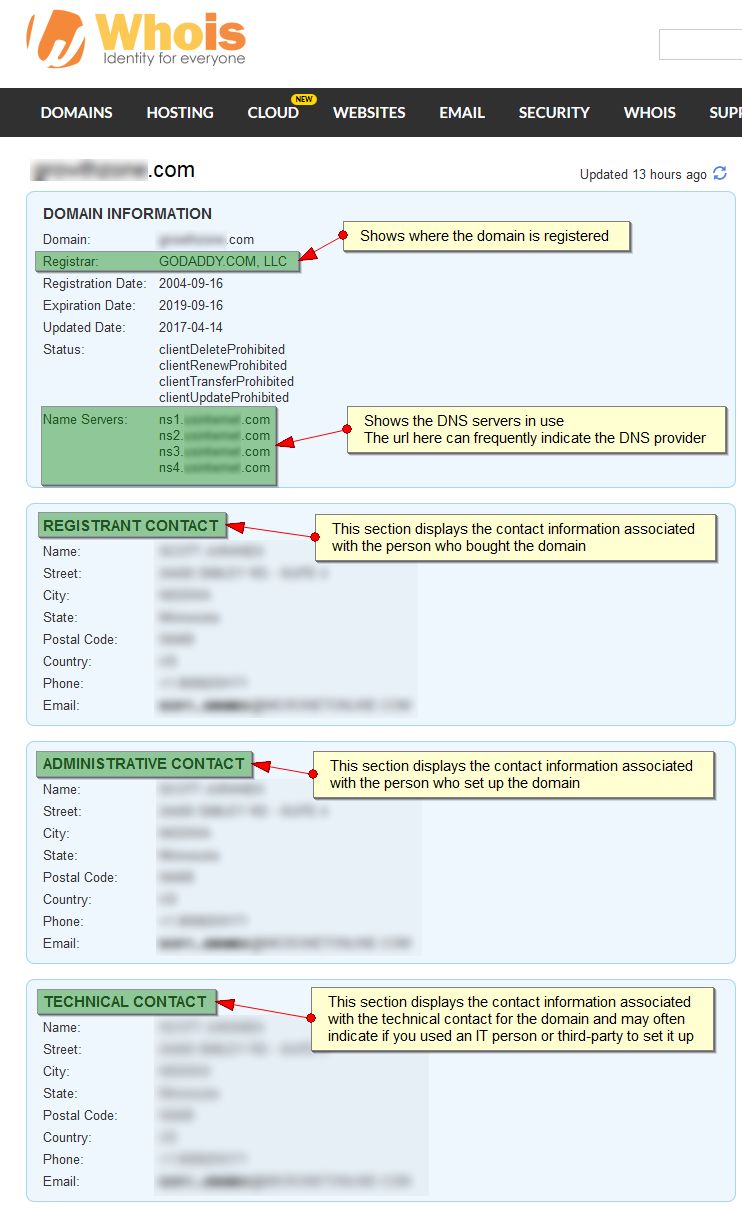Ready to Launch?
1) Are you or one of your associates (such as an IT person or hosting company) making the changes to point your domain to our server?
2) Do you have access to your current DNS hosting?
3) Are you making any changes to your email provider?
4) Do you already have a Google Analytics account for tracking website traffic?
FAQs
What is DNS?
DNS stands for Domain Name System. Think of DNS like the internet's traffic control. When someone types a domain into a browser or sends an email, DNS is what points each visit to the correct destination. It is a set of instructions that tell specific types of traffic how to behave.
For example, if your member sends an email using info@yourdomain.com, your DNS will have a record saying that email traffic coming into yourdomain.com needs to be routed to your inbox. When your member types yourdomain.com into their browser, your DNS will have another record saying that a browser's request for yourdomain.com should pull up your home page from our servers, and that record will tell the visitor's browser where to find the correct website data.
How do I know who hosts my DNS?
Your DNS is most likely hosted by either your domain registrar or your current website provider. If you are uncertain, your current website host should be able to tell you who set up your DNS.
You may find some helpful tools online via services such as https://www.whois.com/ where you can look up your domain to view key indicators to help you determine who set up your domain and/or DNS.
Why does it say my domain is through eNom or Tucows when I don't have an account with them?
Your domain was likely purchased through an authorized reseller that uses one of these services.
You can look up which reseller was used by searching for your domain through their provider lookup pages at:
What if someone else owns my domain and I need to get it transferred?
We do not actually provide registrar services, so to transfer domain ownership you would need to use a transfer key (sometimes referred to as an authorization code or EPP key) from your current host to set up an account with a domain registrar (such as GoDaddy or Network Solutions). It should be pretty painless for you to set up, it is just not one of the services we provide. We generally recommend the organization maintains ownership of their own domain anyway for security purposes, to ensure nobody else can buy it, and to avoid needing to coordinate any future transfers. You do not need to transfer your domain in order to launch the site, but you may need to do so before you cancel services with your current host.
These links should take you exactly where you need to go to initiate the transfer for either of these two options: For GoDaddy help click here or for Network Solutions help click here. We can still set you up with our DNS if needed, but we will just need access to whatever registrar you choose to go with in order to point the domain to it.
If a domain transfer is needed, we recommend setting up an account with one of those registrars right away, just in case there is any delay in the domain transfer as it could slow down the website launch. A domain transfer may take up to 10 business days.
How do I choose an email host?
There are many options for email providers, but below are a couple common email hosts for comparison. We do not provide support for third-party products, but many of our customers use these top providers.
- Office 365
- They do support most advanced features, and a subscription can include access to a lot of other applications depending on the package you choose.
- Plan Options for comparison: https://products.office.com/en-us/compare-all-microsoft-office-products?tab=2
- Google G Suite
- They do support most advanced features, and customers have reported that Google has excellent support documentation and step-by-step wizards to walk you through the setup
- Plan Options for comparison: https://gsuite.google.com/pricing.html?tab_activeEl=tabset-companies#choose-a-plan
Moving to a new host does not carry over your contacts or old saved emails, so you would need to save a backup of anything you wanted to keep before switching to the new provider. If you currently use Outlook, this is very easy: https://support.office.com/en-us/article/Export-or-backup-email-contacts-and-calendar-to-an-Outlook-pst-file-14252b52-3075-4e9b-be4e-ff9ef1068f91
You should also be able to connect your Outlook to pull in emails from your new provider once your account is setup and you’ve made a backup of anything you wanted to keep from the old email host. Depending on what provider you choose, they should be able to give you instructions on how to set this up.

